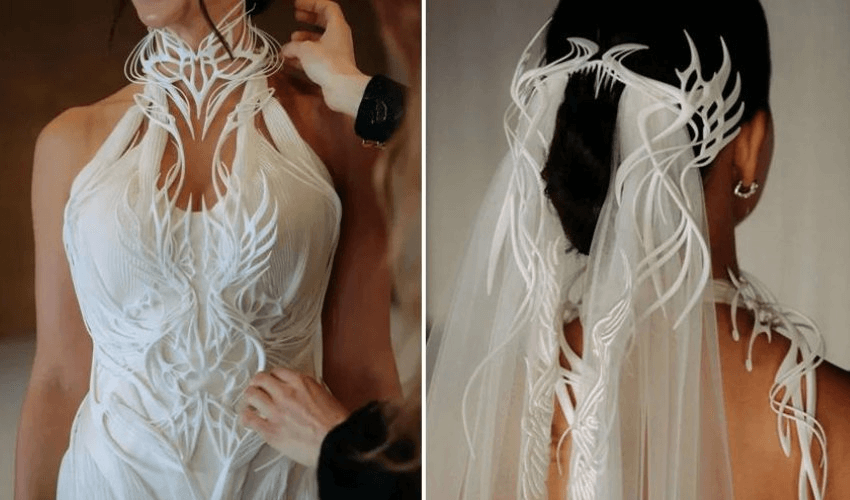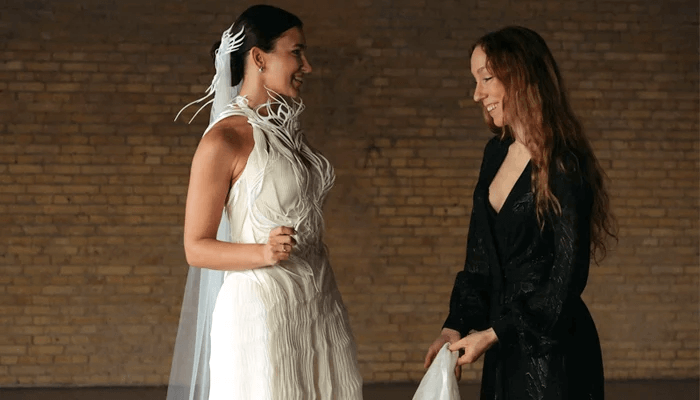
Is it possible to walk down the aisle in a 3D printed wedding dress? What once seemed impossible has now become a reality. Brazilian lawyer Mariana Pavani relied on additive manufacturing technology and designer Iris van Herpen's creativity to bring her wedding dress to life. The Dutch designer aimed to infuse the dress with an unearthly delicacy. The intricate futuristic design that adorns the bodice and neckline gives it a solid look while maintaining remarkable flexibility and durability. The combination of high-tech elements and innovative experiments resulted in a stunning creation that left a significant, lasting impression.
This is not the first time we have heard about the use of additive manufacturing in the creation of wedding dresses. Iris van Herpen's first design in this realm debuted in 2010, featuring a rigid structure with overlapping shells, and was recently shown at the Sculpting The Senses exhibition at the Musée des Arts Décoratifs in Paris. Additionally, designer Ada Hefetz has used 3D printing to transform conventional wedding dresses, adding a unique touch. In this case, van Herpen created a one-of-a-kind number perfectly tailored to the body of the bride who walked down the aisle on May 11.

To the right Iris van Herpen; to the left Mariana Pavan with the 3D printed dress.
Creating a 3D printed wedding dress
To achieve a custom design perfectly adapted to Pavani's body, they started with a 3D body scan. This process involved several assemblies of the hand-pleated main dress, with delicate fabric and all elements created via 3D printing. This ensures that the pattern matches the bodice design exactly. The 3D file of the dress was 216.7 MB and the artist spent 600 hours to complete the design. Printing took 41 hours at a facility in Paris. According to van Herpen, the dress is seamless, meaning it cannot be made with a typical pattern. "It was really a dream project for me because 3D printed fashion clothes are in museums and on runways, but for someone to wear it on the most special day of her life I think is really something else " explained van Herpen.
Nylon (PA12), a material that fascinates the designer, was used to produce the 3D elements. “The quality of the flexible material is so, so good. She can sit in it, she can do anything in it without it becoming less flexible over time." she added. Iris van Herpen combines traditional fashion techniques such as pleating, draping and beadwork with high-tech elements such as silicone molding and laser cutting. She views both disciplines as an integral part of her brand's DNA, a philosophy clearly reflected in this unique 3D printed dress. Regarding the final result, Pavani concluded: “I really wanted an unusual dress, something unique. From the beginning, I was hoping that the dress would incorporate 3D printing into its design.„

The wedding dress combines technology with tradition.
0 Comments